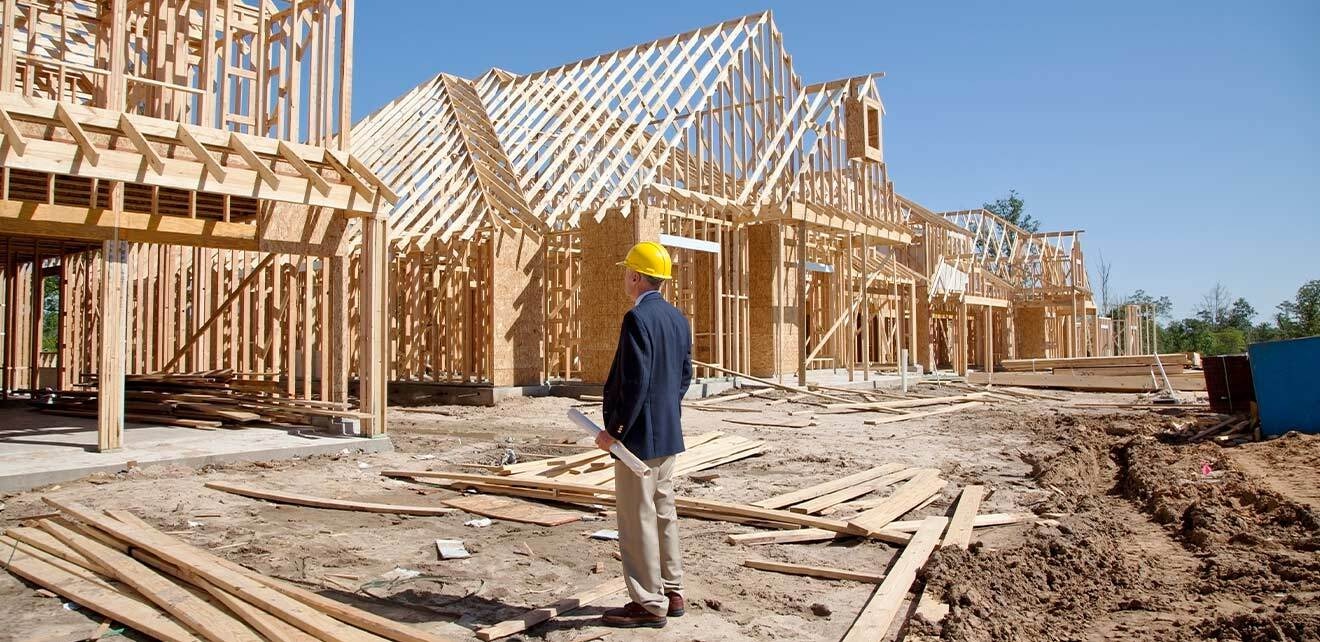Home > Blog
Read Time — 7 minutes
Building Homes in 90 Days or Less: Can it be Done Again?

As a homebuilding industry, we’ve encountered a production crisis. Before 2020, cycle times for the average builder were around 90 calendar days, with some efficient builders trimming their cycle times down to 45 days or less. After 2020, and continuing today, those average cycle times have extended to 120, 150, or 180 days or more. This has a significant impact on financing, cash flow, and overall customer satisfaction which negatively impacts the entire industry and its future.
There have been various reasons given for the increase (and I’ll leave it up to economists to expand on that), but the question remains:
What can be done today to get back to that status quo of 90-day cycle times that was so prevalent in previous decades?
I’m going to come right out and say there is no single strategy to reducing cycle times, and there are certainly some economic headwinds we’ve encountered and will continue to in our industry. Some of it has been historic and unprecedented. But I also know that unless we as an industry decide to be proactive and do something about it, it will continue to get worse. I’d like to offer some successful strategies that I’ve used myself to achieve not only that 90-day benchmark, but then reduce build cycle times to 60 days and eventually 45 days consistently.
Believe like Ted Lasso
As a starting point, I think there is a belief issue. Many superintendents (and I’m including project managers, builders, or other terms used for someone who manages a construction schedule in my definition) today have not experienced 90-day cycle times. They simply don’t believe it’s even achievable.
I’m going to offer a simple suggestion: map out your ideal schedule in a Gantt chart.
The main goal would be to understand each trade’s average work time on a job. And as a simple starting point, map out a schedule to have one trade on the job every day, using their standard duration. Simple as that. Later, you can consider stacking trades on the same day, re-organizing some processes to be more efficient, etc., but start by just trying to have one trade on the job every day.
I’ve done this many times myself, in various markets, with various home sizes, and I’ve always come to the same conclusion. Almost every standard single-family home can be built in 90 days or less. This usually amounts to about 65 working days. Do this exercise with your best project managers and superintendents, discussing all the best ways a job should be run, and you’ll overcome the belief issue. They’ll be able to see it’s achievable.
Everyone involved in production needs to be on the same page. You should, and must, meet with every trade partner to clearly explain the production requirements and hire trades to meet those requirements.
Deployment
The next biggest hurdle is deploying the schedule and slotting your starts to know that your production schedule is physically achievable. Building and scheduling one house is easy for a seasoned professional. As your volume increases, things get much more complicated.
I typically hear builders say, “We have a goal to close 300 homes this year!” Ambitious! What does that look like in reality? To close 300 homes, you must build at least 300 homes. That means you have to start with roughly six homes per week. Here’s a simple question: can you complete six homes per week?
Here’s where the scheduling choke points come into play. Typically, three trades consume the most cycle time on job sites: foundations, framing, and drywall. These cycle times vary from market to market, but typically, these three determine how many homes you can complete per week. You might be able to dig six foundations a week, but can you pour, frame, or drywall six homes per week? Whenever I encounter a company that is having issues completing homes and meeting its closing goals, I usually come to find out that one of those three major trades can only complete half of the expected closing goals per week. Realistically, you are bound to what those trades can produce. You either must find more trade capacity or reset your expectations for closings.
It takes some careful planning, but to predict these possible shortcomings in your schedule and whether you have the resources to achieve your goals of housing starts, you must first lay out schedules for every home you expect to dig and when. You need to see the entire scheduling picture. How many jobs is my plumber scheduled for in one week if I’m digging six homes per week? There’s a surprising answer here if you’ve ever done this work; it’s more than six, especially for those trades who visit the job two or three times through its completion.
Communication
Communication is key. Trades and superintendents need to know what is happening at a minimum of two weeks in advance if not four weeks or more, to merely show up on time. This is where centralized scheduling is required. That’s a common term with multiple meanings, so I mean this.
With centralized scheduling, you must institute one location where the schedules are accessible for every active job by all parties involved. Everyone must know exactly where they need to be and what they need to do without the reliance on phone calls, emails, or texts. There needs to be ONE source of truth and only one. And at a bare minimum, that schedule must be kept up to date every day, and everything needs to be scheduled at least two weeks in advance.
More importantly, all your superintendents need to be on the same team, so you should have weekly production meetings with them. They should be meeting together, looking at the schedule on all houses for the next two weeks at a minimum, identifying potential scheduling or resource conflicts, and taking proactive action to address them before they become a problem.
Consistency
How can you expect consistency in cycle times if you are not consistent in your scheduling? The biggest issue that causes schedule conflicts and delays is changing the schedule! One minor schedule change has an avalanche effect on all your other schedules, especially if you are a high-volume builder. Many of you are living with this pain every day. The hard truth is that the effort has not been applied in advance to know that the schedule will work.
If you go through the effort of planning a schedule template that works for all of your product lines, you’ve stacked those schedules together according to your start schedule to know that you have the resources to complete each task on time on every house, and you’ve qualified your trade partners to meet those production requirements, there should be no excuse to adjust any schedule on any house except for acts of God.
The planning is only half of the battle. The other half that causes the most amount of re-scheduling pain is this: your superintendents are competing against each other to achieve bonuses. Those bonuses are often rewarded for beating expected cycle times, and not delivering consistent completions. How many of you have one superintendent who is always performing and regularly beating the expected cycle times, while most of your superintendents could not meet their deadlines no matter how hard they try?
Every superintendent needs to realize they are on the same team, and the thing that’s going to deliver the most homes the quickest is consistency in scheduling by holding to the schedule. Reward sticking to the plan rather than building homes faster. Faster will come as your superintendents work as a team, identify areas where the schedule can be shortened, and deploy resources more efficiently.
Conclusion
One strategy that has never failed me in my career has been going through the act of planning, especially when it comes to construction scheduling. Schedule to the reality and not the ideal. By going through the exercise of creating a solid schedule template, organizing start dates to be considerate of trade partner capacity, publishing the schedule in a central location well in advance, and NEVER changing schedule dates unless uncontrollable events require it, areas where cycle times can be reduced, and efficiencies can be gained will become very apparent.



